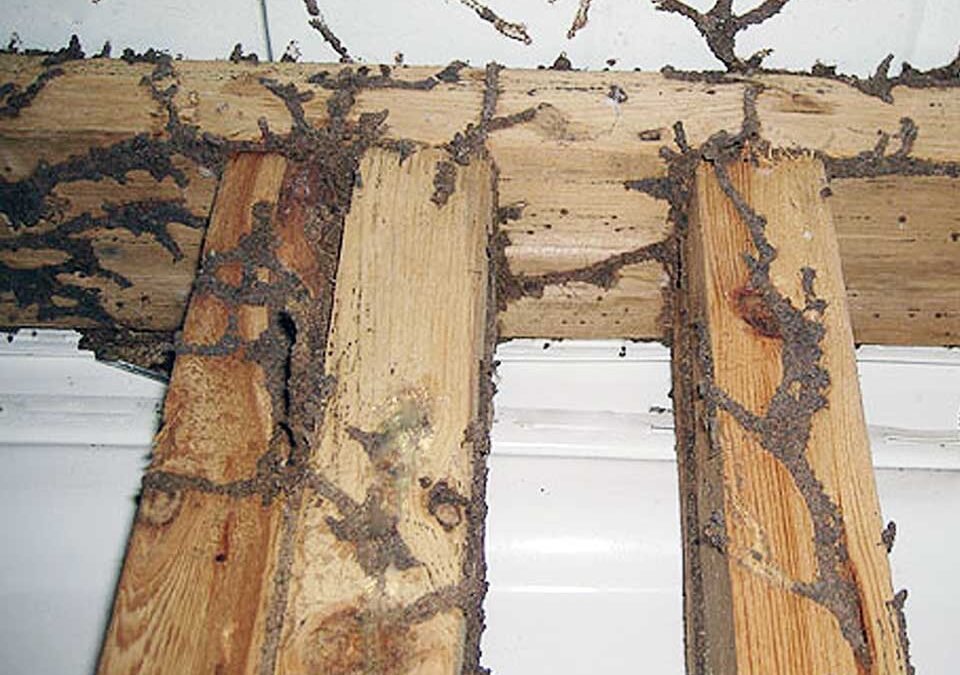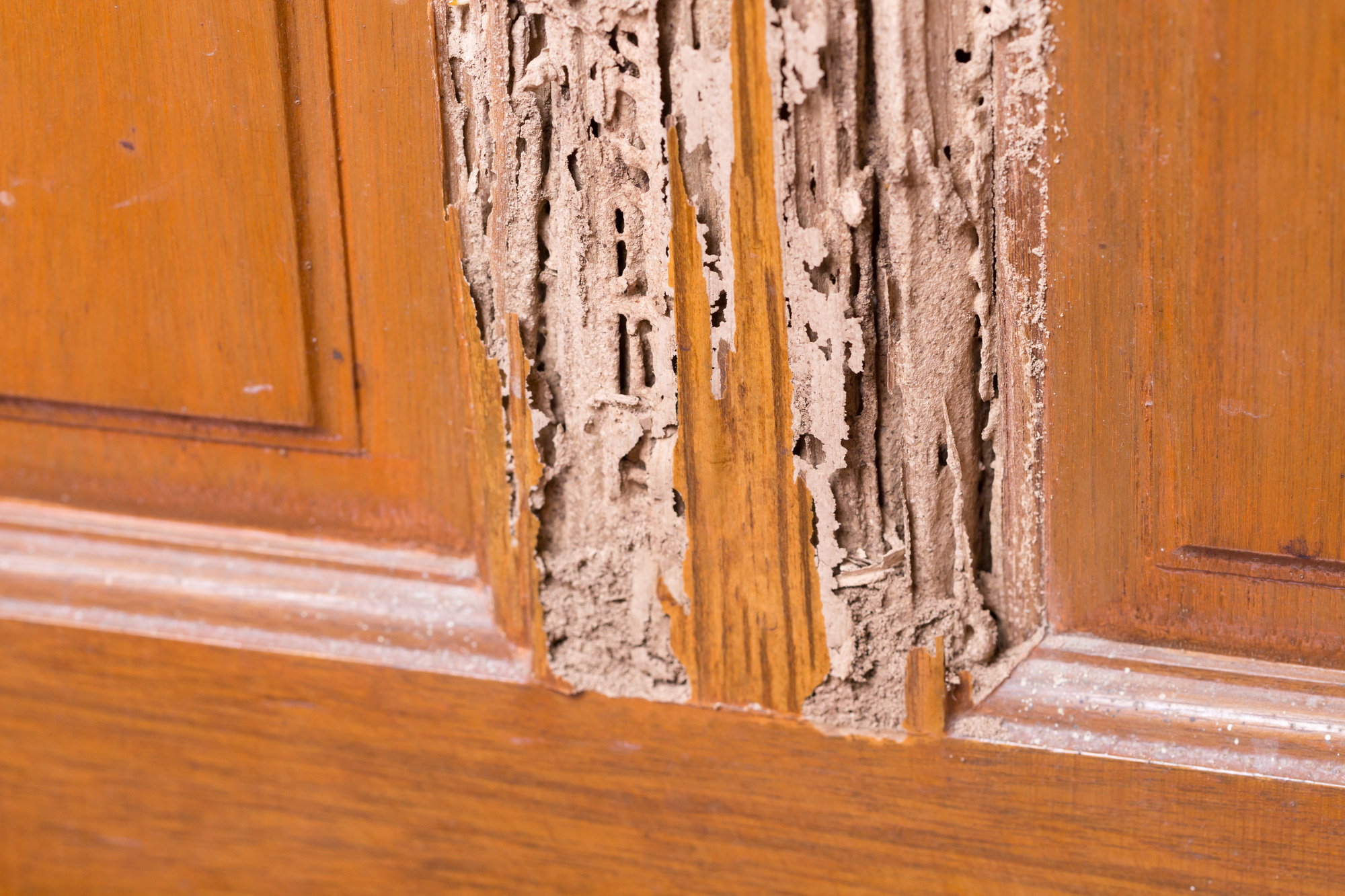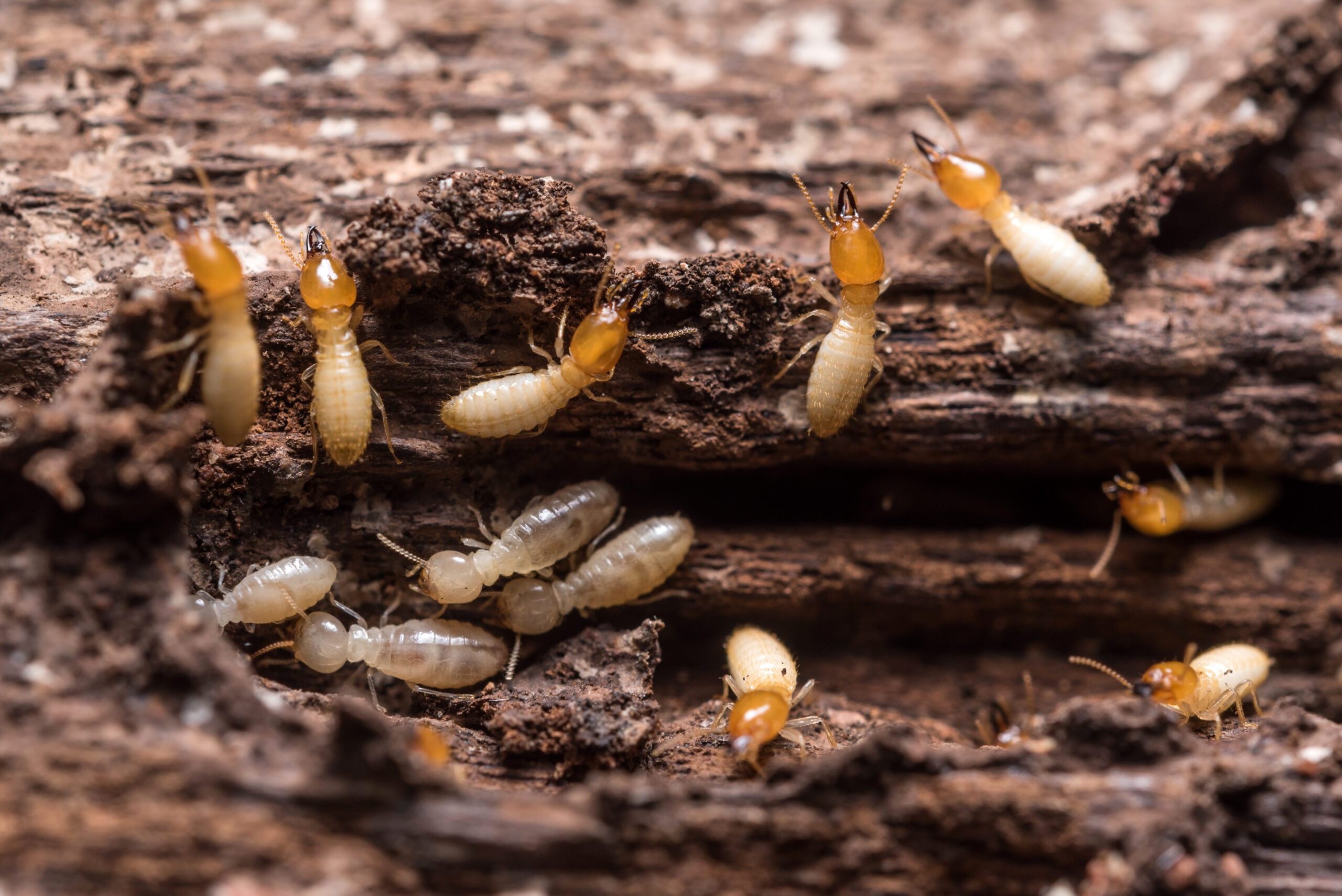Termite Removal in Ohio
Pest Control Xperts Services for Zanesville, Including Hopewell, Frazeysburg, Dresden, New Concord, Chandlersville, Duncan Falls, Philo, and Roseville
Termites are a serious concern for anyone responsible for a home or business in Ohio, especially those located in and around Zanesville. These insects often feed on wood and other materials containing cellulose, steadily weakening beams, floors, and other structural components that support a building. Many people first learn they have termites after spotting mud tubes along basement walls, paint that appears to bubble or peel, or even floors that feel soft or spongy underfoot. By the time these signs appear, a colony of termites may have already caused significant damage that can be expensive to repair. Pest Control Xperts delivers termite removal in Ohio designed to stop colonies at their source. A professional exterminator in Zanesville recognizes how termites operate in soil, behind walls, or inside damp wood, and provides advanced solutions that reach deep into hidden tunnels where the queen and worker termites remain out of sight.
Some property owners make attempts to address termites with minimal measures, such as spraying surface insecticides around the perimeter of a basement or clearing away the mud tubes they see. Although these approaches may kill some worker termites, they seldom affect the main colony in the soil or behind walls, where the queen produces more foragers to replace any lost. Subterranean termites in Ohio typically nest underground, traveling through earth tunnels to find wooden posts, beams, or supports. Knocking away a few tubes does not remove the queen or prevent fresh termites from gnawing at hidden framing. By enlisting help from an exterminator in Zanesville who employs ground bait stations, trenching, or specialized foams, owners can ensure the full colony is targeted. The sections below describe why termites settle in Zanesville and its neighboring towns such as Hopewell, Frazeysburg, Dresden, New Concord, Chandlersville, Duncan Falls, Philo, and Roseville, the problems they bring, how to detect an active infestation, and why advanced pest control far outperforms basic do it yourself methods.
Why Termites Appear in Zanesville, Hopewell, Frazeysburg, Dresden, New Concord, Chandlersville, Duncan Falls, Philo, and Roseville
Termites can invade many structures if they discover rotting or damp wood to feed on. Certain conditions in these Ohio areas often encourage termite colonies to thrive unless property owners act:
- Wood to Soil Contact
Subterranean termites are common in this region. They move through soil to reach wood, so wooden posts or siding that touch the ground allow them easy access. If porch supports rest directly in soil or if mulch piles press against wood siding, termites can slip in undetected. - Moist or Damp Wood
Termites prefer wood softened by moisture or decay. Even a slight leak under a sink, minor seepage in a basement, or a rotted porch beam can stay unnoticed, creating a prime feeding zone. Some correct large plumbing issues but ignore small, persistent drips that keep wood damp. - Mulch or Debris Near Foundations
Thick mulch or decaying stumps next to the foundation often retain moisture close to wood, helping termites transition from soil onto beams or frames. Storing wood piles against siding or leaving logs in yard corners can also lead to termite movement from yard to house. - Delayed Recognition
Termites chew from the inside out, leaving paint surfaces looking normal until structural damage becomes advanced. By the time someone notices bulges in floors or suspicious mud tubes on walls, a colony may be feeding in multiple zones. Attempting to patch small areas of rotten wood will not reach the soil nest producing new worker termites. - Partial Treatments
Some use store bought insecticides to spray a basement perimeter or brush away mud tunnels. While that kills a few worker termites near the surface, the queen remains safe underground. This leads to illusions undone when new termites replace the lost foragers, indicating the nest endured.

Challenges Termites Create for Properties
Termites quietly compromise structures and drive up costs for owners who must repair or rebuild damaged beams:
- Structural Instability
Over time, termites remove wood from within beams, joists, or frames, weakening them. If floors become spongy, roof supports sag, or porch posts lean, significant repairs may be required. Catching termite activity early saves money, but many only discover it once damage is extensive. - High Repair Bills
Insurance policies often exclude termite damage, leaving owners to pay for major replacements. Correcting advanced feeding can demand replacing entire sections of framing, subfloors, or porch supports. That cost can be steep if the colony was active for months or years. - Lowered Property Value
Buyers often insist on a termite inspection before finalizing a sale. If evidence of termites surfaces or if repairs are incomplete, potential buyers may walk away or demand a lower price. Even after treatment, the history of termite issues can influence real estate transactions. - Spreading to Adjacent Areas
In neighborhoods, termites sometimes migrate from one yard to another if multiple properties have rotted wood or soil contact near beams. One home might treat termites, only to see them return if next door owners ignore rotted stumps or damp wood near their foundation. - Anxiety for Residents
Suspecting invisible insects undermining beams or subfloors leads to stress for anyone responsible for the property’s safety. Slight bulges or minor paint bubbles cause owners to worry about the extent of hidden feeding. Confirming that no termites remain is essential for peace of mind.
Clues of a Termite Infestation
Termites hide inside wood or beneath soil, so owners watch for subtle or indirect indicators of feeding:
- Mud Tubes Along Basement Walls
Subterranean termites construct narrow, earthen channels to travel from soil to wooden beams. Owners who wipe them off see them reappear soon if the colony endures. Observing these tubes near foundations or basement walls strongly suggests termite feeding behind the surface. - Swarmers or Discarded Wings
A mature colony produces winged termites, often called swarmers, which appear near windows or doors at certain times of year. They leave small, translucent wings behind, frequently prompting confusion with flying ants. Swarmers reveal that a nest is established, not just recently arrived. - Bubbling or Peeling Paint
Termites eat wood from within, sometimes leading to bulging paint or wallpaper. Tapping these areas might yield a hollow sound, indicating hollowed out beams or studs behind. Many initially blame moisture alone, missing the termite connection until further damage appears. - Soft or Spongy Floors
In advanced infestations, floors or subfloors become compromised, sagging underfoot. Owners noticing unusual give in boards might suspect termites are removing the wood’s interior structure. An exterminator in Zanesville can confirm if termite tunneling caused this softness. - Wood Shavings or Small Debris
Certain termites push out bits of wood or droppings from tunnels. Small piles of debris near baseboards or window frames might be mistakenly cleaned up without investigating the deeper cause, letting the colony thrive undiscovered.

Why an Exterminator in Zanesville Is Essential for Termite Removal in Ohio
Some attempt quick fixes that rarely touch the hidden core of termite activity. Advanced coverage fully removes the threat:
- All Stage Inspection
A professional examines foundations, yard edges, porch supports, or moist beams for signs of subterranean activity. Identifying how termites reach interior wood and which species is present shapes the plan. Missing one main nest can lead to illusions undone by new foragers soon after partial treatments. - Correct Method Selection
Subterranean termites often respond best to trenching liquid termiticides along foundations or placing in ground bait stations that workers carry back to the nest. Certain foam injections also help if known tunnels exist in rotted beams. A random store spray seldom penetrates far enough to reach the queen or the entire colony. - Safe, Targeted Coverage
Instead of saturating living areas, an exterminator focuses on foundation lines, soil contact points, or identified galleries. Families typically stay in their homes, avoiding newly treated zones until advised. This approach limits chemical use while ensuring the queen and main colony cannot survive. - Moisture and Wood Condition Fixes
Removing active termites helps, but owners must also resolve leaks, damp beams, or direct soil to wood contact that invited them in. By removing these conditions, owners prevent new colonies from taking hold after the old one dies. - Monitoring and Follow Up
If termite activity continues or new mud tubes appear, a second check addresses overlooked tunnels or secondary colonies. The process only ends once no new signs persist for a set period, guaranteeing illusions undone by leftover termites do not arise.
Pest Control Xperts Termite Removal Approach
Our plan addresses each stage, from detecting termite entry to confirming no hidden nests remain:
- Consultation and Inspection
We speak with owners about suspicious paint bubbles, mud tubes, or warping floors, then inspect basements, crawl spaces, yard edges, or anywhere wood meets soil. Identifying the species and nest pathways dictates whether trenching, baits, or foam is best. - Customized Treatment Application
Depending on conditions, we might trench around the foundation to apply liquid termiticides, install in ground bait stations that worker termites carry to the nest, or inject foam in suspect galleries. The goal is to ensure lethal contact with the queen and foragers out of view. - Safe Product Deployment
Owners generally stay home, avoiding newly treated zones until dryness. By focusing on known termite routes or soil contact, we minimize overall chemical usage. This method spares families from wide coverage while striking the entire colony. - Moisture and Wood Repairs
Termites rarely abandon a property if damp beams remain. We advise patching leaks, raising porch supports off soil, or removing rotted wood. This synergy blocks a fresh colony from moving in, preserving the property once the current termites are gone. - Follow Up for Continued Assurance
If new mud tubes or swarmers emerge, a reevaluation tackles any missed pockets. The plan completes when owners confirm no further sightings for a designated period. This finality spares illusions undone by undiscovered tunnels or leftover colonies.

Why Zanesville, Hopewell, Frazeysburg, Dresden, New Concord, Chandlersville, Duncan Falls, Philo, and Roseville Choose Pest Control Xperts
Local customers rely on our termite removal in Ohio for key benefits:
- Local Familiarity
An exterminator in Zanesville understands how building structures, climate, or yard conditions typically allow termites to access wood. This insight helps identify nest routes accurately and select proper termiticide or bait applications. - Complete Colony Destruction
We eliminate all termites, from workers near basement walls to queens in the soil nest. Owners avoid illusions undone by fresh foragers replacing those lost in partial attempts. Thoroughness is our priority. - Safe, Targeted Methods
Rather than treating wide interior areas, we focus termiticides around foundations or galleries, letting families remain onsite with minimal inconvenience. People only avoid new treatments for a short window, returning to normal routines promptly. - Moisture and Wood Condition Advice
Removing current termites is only half the solution if rotting beams or direct soil to wood contact persists. We recommend dryness measures or minor wood repairs to prevent a new colony from emerging later. - Persistent Follow Up
If owners see more mud tubes or suspicious paint bubbles after treatment, we revisit to confirm no missed nest remains. Completion only occurs once there is no new termite activity for a set timeframe, ensuring real resolution. - Professional, Reliable Service
We arrive on schedule, protect each building, and communicate each step clearly. Many local owners share positive reviews, having witnessed how advanced termite coverage stops silent damage that partial do it yourself solutions overlook.
Contact Pest Control Xperts for Same Day Service
When mud tubes appear along basement walls in Zanesville or if families in Hopewell, Frazeysburg, Dresden, New Concord, Chandlersville, Duncan Falls, Philo, or Roseville observe paint bulging in floors or see suspicious winged insects near windows, ignoring the issue allows termites to feed silently. Pest Control Xperts provides termite removal in Ohio, choosing either trenching with liquid termiticides, in ground bait stations, or foam injection so worker termites deliver lethal product back to the soil nest. An exterminator in Zanesville completes coverage once zero leftover signs persist, avoiding illusions undone by undiscovered queens or hidden tunnels.
Call Pest Control Xperts now for same day service and save your home or business from advanced termite damage that can lead to costly beams or floor replacements. By combining targeted termiticide usage, dryness fixes, and small wood repairs that eliminate rotted conditions, we deny termites the environment they rely on to survive. Owners and staff then enjoy peace of mind, confident that the structure remains free from pests silently gnawing away in unseen spaces. The synergy of advanced solutions and basic upkeep ends the colony fully, rather than delivering illusions undone by leftover termite networks continuing to chew behind walls or beneath floors.
